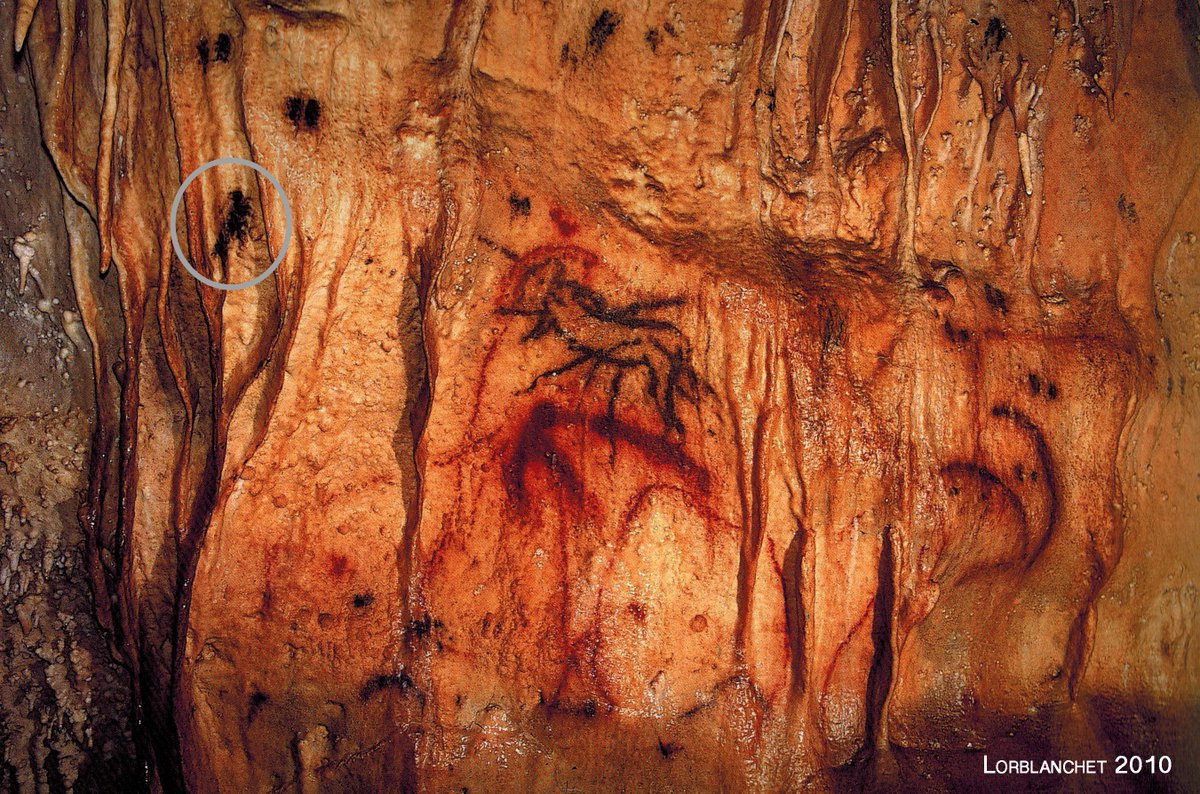
🙋♀️Hi everyone! Today is #FridayPaleoArt and we’re visiting Chufín cave in Cantabria, one of the @UNESCO World Heritage sites of Cantabrian Region.
Cave: #Chufín
Place: Riclones (Cantabria, Spain)
Motif: Red paintings and engravings
Chronology: #Premagdalenian
Cave: #Chufín
Place: Riclones (Cantabria, Spain)
Motif: Red paintings and engravings
Chronology: #Premagdalenian

⁉️Chufin cave, also known as the cave of Moro Chufín, is located on a cliff above the reservoir of La Palombera, at the confluence of the rivers Lamasón and Nansa, in Cantabria. It was discovered in 1972 by Manuel de Cos Borbolla and the reservoir guard Primo González. ⚓️ 

➡️The rock art of this cave is made up of two main groups: the indoor paintings and the outer engravings. The group of red paintings inside the cave was discovered on 30 March 1972, and shortly afterwards Martín Almagro identified the group of rock engravings on the outside. 

❗️The engravings are distributed in three sectors of the vestibule, although altered due to conservation problems. There are some sets of fine lines and, in the central sector, a set of thick, abrasive lines in which at least 16 trilinear hinds can be distinguished.👇😉 

📖These hinds, superimposed one on top of the other, stand out for the anatomical schematic outline of their lines, consisting of three or four lines, which make up the outline, the ears and one leg per pair. In some cases, there is also a small line indicating the mouth. 📸 

📚The interior of the cave has red paintings and, to a lesser extent, some engravings, specifically a possible bird figure with fine lines and an anthropomorphic figure. The red paint represents zoomorphic figures, an auroch and a horse, and dotted signs (Almagro, 1973). 

🤔The dotted signs, made by digitations, form alignments of dots in parallel, tangent, or concentric bands, with one group standing out around a small vault on a rocky visor, which was interpreted as a vulva (Almagro, Cabrera y Bernardo de Quirós, 1977).💭 

👉The technical and stylistic analysis of this rock art dates it in the ancient chronological stages of the Upper Palaeolithic. The fine interior and exterior engravings and the red paintings would be Aurignacian and/or Gravetian and the deep exterior engravings Upper Solutrean .
⁉️ The cave of Moro Chufín owes its name to a legend about a Moor who had buried a treasure in it. As a result of this legend, the cave, known since immemorial time by the locals, had been looted in search of this treasure.
📖In 1974, Cabrera and Bernardo de Quirós began its excavation using archaeological methodology in two areas of the vestibule. They located a room structure that was dated to the Upper Solutrean and two other stratigraphic layers below it (Cabrera Valdés, 1977). 

😉👉Due to COVID-19 restrictions, Chufin cave can’t be visited now but we hope you will be able to visit it soon. Virtual tour: cuevas.culturadecantabria.com/chufin/visita-…
❗️Exciting news! In September, the BeforeART team will start a new project to excavate the site and study the rock art at the Chufín cave site in order to deepen the about who were the people who made this art and how they lived.❗️
• • •
Missing some Tweet in this thread? You can try to
force a refresh
















